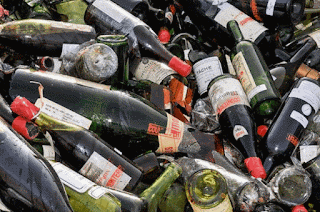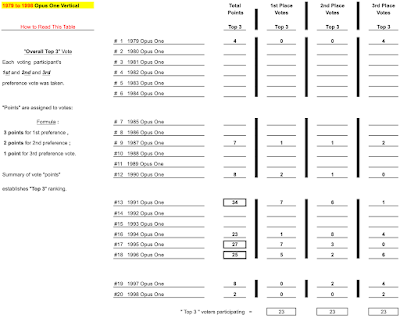However, it seems to me that some of the numbers cited with regard to his original case do not add up sensibly; and I discuss here some notes from one of my correspondents that might shed some light on the matter.
Kurniawan apparently acquired a taste for fine wine in c. 2000, and became a purchaser of old and expensive bottles. Indeed, by the end of 2006 we he was reported by The Los Angeles Times ($75,000 a case? He’s buying) like this:
Kurniawan’s outsize taste for old wine, however, has changed the market, say auction house insiders. Since he started buying, prices for rare wine have skyrocketed. As he stepped up his acquisitions in 2004, a dozen other ultra-rich buyers emerged to compete with him for the best bottles. And the market for old wine exploded.Not bad for a recent migrant. The newspaper article further notes:
It was at a birthday dinner honoring his father at a restaurant on San Francisco’s Fisherman’s Wharf just before he died that Kurniawan took his first sip of fine wine — a 1995 Opus One, the most expensive wine on the list at $150 a bottle. The restaurant is long forgotten, he says, but after that first taste, wine became a consuming passion.
Turning now to the scale of his nefarious activities. Most commentaries tend to be sensationalist, and therefore quote dollar amounts, like $150 million, for the amount of fake wine involved. Few articles have looked at the number of bottles. The best of them is: Running the numbers on Rudy’s fake wines. This article translates the dollar amount as 70,000 bottles, and questions whether this is even feasible in the 10 years available.
Obviously it is not feasible, but nor are some of the other numbers bandied around. For example, the 2016 Sour Grapes documentary notes at the end: “It is estimated that there may be as many as 10,000 of Rudy’s bottles still in private collections”, while The Globe and Mail review of that documentary (Caper-tale doc explores a world of greed, wine and money) suggests 40,000.
Let’s do some basic maths. Even the most wildly optimistic estimate might suggest that Rudy spent 30 minutes to create a fake bottle of wine — from sampling the fraudulent wine blend for verisimilitude, creating the fake front and back wine labels using his laptop computer and digital scanner/printer, marking up the cork, and affixing the “correct” looking capsule. That’s only 2 fake bottles per hour of time, perhaps three.
So, 10,000 bottles equals 5,000 hours. A 40-hour week yields 125 full weeks of doing little else than bottle wine. Is this likely?
My correspondent in answering this question is Bob Henry, a wine consultant based on the west coast of the USA.* He comments:
I knew Rudy fairly well. We first met when he would hang out on weekends at Pasadena Wine Merchants, near Caltech. I managed the wine bar on Fridays and Saturdays; he visited and sampled. He later joined my wine-tasting luncheons here in Los Angeles, each based on a “theme”.
He liked to drink and eat and have long conversations about the finer things in life. He hated actually “working”. I can’t see him having created that many fake bottles of wine. Rudy is many things, but having an indefatigable “work ethic” to crank out tens of thousands of fake wine bottles is not one of them. He liked to party very late into the night with his wine friends (not me), and then sleep in late.
Bob (a former administrator for one of the leading law schools in the U.S.A.), and his friendly acquaintanceship with Kurniawan, should not, of course, be misconstrued as him condoning any of Rudy's nefarious deeds.
Anyway, one of the wine-tastings that Bob mentions above is especially worth looking at here (see the table below). Bob continues:
Rudy attended many of my organized wine-tasting luncheons here in Los Angeles. His participation preceded his nefarious deeds… The first event he attended was a 20-year-vertical of Opus One [1979–1998], in 2001 (or perhaps 2002). The first “great” wine he claimed he ever tasted [see the quote above]. Before the tasting began, Rudy predicted from his first-hand drinking experience that the 1996 vintage would show best / be the preferred wine. And he was correct.
He brought to the event the first three vintages in magnums. I sourced the next 17 consecutive vintages in 750ml format. The wines were not tasted “single blind”, because I wanted to showcase how the wine’s style evolved over time, through successive “hands” of winemakers. First “style” from the outset was very “French-like” due to the influence of the folks at Mouton. Second “style” was more of a hybrid between France and California. Third “style” is distinctively Californian. No-one confuses it with a red Bordeaux these days.
For reports on more recent Opus One verticals, by other people, see:
Anyway, there you have it. It seems to me that Rudy Kurniawan was credited by those who met him with having a superb wine palate, especially for older vintages. It seems to me that, with a palate like that, he might have done a lot better by creating his own legitimate wines, rather than by misleadingly imitating those of others. Sadly, his fame apparently continues, in SE Asia, where the drinkers know they are getting a re-creation: Wine forger who duped Hollywood producers and California billionaires strikes back.
* Bob Henry CV:
- consumer goods marketing advisor
- nonprofit fundraising advisor
- wine advisor to Los Angeles area wine stores
- wine advisor to Los Angeles restaurants
- wine-tasting luncheon organizer
- current and former wine judge for magazines and county fairs
- private wine-locker organizer
- personal wine shopper for private wine collectors
- wine blog commenter [the one that introduced him to me].





Few claim that Rudy Kurnivan acted alone. It is quite possible that he had a group of people working for him. His main task was to select the appropriate wines and determine their proportions in the blend. But making fake labels, corks, capsules, finding similar bottles, making it look like it was all "aged" - he may well have entrusted other people with whom he could share his profits. It's another matter that investigators found no trace of group activity in these wine forgeries. But that doesn't mean that Kurnivan was working alone. During and after the investigation, Rudy never said a word about whether he had help or not?
ReplyDeleteThere was something similar in the investigation of the late German collector Harvey Rodenstock. Also, the alleged large volumes of complex forgeries, including bottles, corks, labels, etc., which he alone could not have done. And also, like Rudy, Harvey was not a great enthusiast for working with his hands. Developing his wine taste, carefully orchestrating various noisy wine tastings with virtually all the leading wine experts of his day (from Michael Broadbent to Jancis Robinson) - that's what Rodenstock was famous for.
It's just that he died in time and his negative impact on the world market of rare wines was practically forgotten (forgiven?) and was avoided without legal charges and imprisonment. But with Kurnivan the accusation was brought to a relative end and he received a real prison sentence.
At the same time, I also believe, as you do, that it is impossible for even a group of people to fake the tens of thousands of bottles mentioned. But these volumes are the result of the media's pursuit of sensationalism.
ReplyDeleteThink about the logistics of crafting artful "knock-offs" of old and acclaimed wines?
ReplyDeleteRudy would have needed a sizeable cache of old wines to concoct the blend for his ersatz bottlings. That requires a veritable warehouse of inventory.
But no warehouse of blending component wines was mentioned in the press coverage of Rudy's arrest by the F.B.I. Just the search of his house in the city of Arcadia in the San Gabriel Valley -- east of Los Angeles.
That lack of a cache of old wines discredits the projections of fakes bottles numbering in the high thousands or tens of thousands.
English wine merchant Stuart George did a commendable job "penciling out" the numbers on Rudy's fakes:
"Running the Numbers on Rudy's Fake Wines" | Wine Searcher News (Sept 20, 2018)
URL: https://www.wine-searcher.com/m/2018/09/running-the-numbers-on-rudys-fake-wines